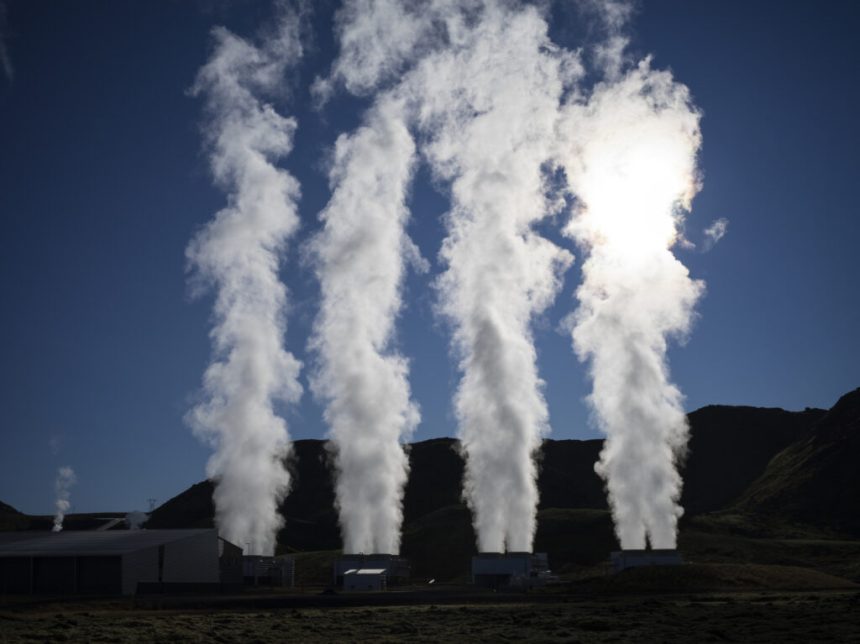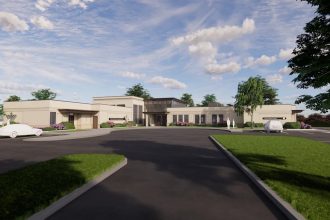Steam and water pipe at Hellisheiði Power Station, Suðurland, Iceland. (Photo by Feifei Cui-Paoluzzo/Getty Images)
Neighboring an area that’s becoming the heart of geothermal technology in Utah, a unique development is moving forward, seeking to produce 100 megawatts of energy without using water-based tools — when fully operational.
Last week Millard County commissioners gave an enthusiastic nod to Rodatherm, a Canada-based company, to resume construction of a generation facility partially sitting on federally-managed land in Beaver and Millard counties, near FORGE, a laboratory sponsored by the U.S. Department of Energy that has been working on breakthroughs in geothermal technology.
SUBSCRIBE: GET THE MORNING HEADLINES DELIVERED TO YOUR INBOX
The main difference between this technology and that of FORGE is that Rodatherm doesn’t stimulate the fracture of reservoirs to create energy, like other enhanced geothermal systems, but essentially, uses a closed-loop system with a heat pump at depth to achieve the same effect, Curtis Cook, founder and president of Rodatherm Energy Corporation said.
“It is a method by which we efficiently and at very low cost, convert heat to power,” Cook said.
The company uses a fully-isolated fluid directly in a power-generating turbine, a system that’s 50% more efficient than water-based geothermal generation, according to a news release from the company. It also promises to be competitive in cost at early stages of the project, and to have a multiple-decade life span.
“Utah in general, is very favorable for geothermal given its high thermal gradients. What that practically means, it has much higher temperatures at shallower depth, so it is much more conducive for geothermal power generation,” Cook said.
And, the area is “very well-studied” attracting not only FORGE but other geothermal competitors, he said.
Rodatherm’s geothermal closed-loop system graphic. (Courtesy of Rodatherm)
After initially losing funding for the project, Rodatherm has found opportunities with investors that highlighted their desire to partner with entrepreneurs looking for decarbonization solutions, according to the release. Current state and federal initiatives favoring geothermal investment have also played a role in the comeback.
“A year ago, it was very different in how geothermal was being assessed, so the economics were unclear,” Cook said. “Fast forward, now under the (‘big, beautiful bill’), and the new administration’s support for geothermal, the economics of the project now look very robust.”
Michael Dabbs, vice president of corporate development at Rodatherm, said in a presentation to the Millard County Commission that the company is drilling down two miles, then two more miles horizontally in a loop crossing Millard and Beaver counties.
“We’re looking to drill on Jan. 15. We’re fully permitted. We’ve already done some construction out there a couple years ago, but our financing didn’t quite go through,” Dabbs told commissioners. “So now we have financing, and we’re hoping to start construction this month.”
A federal environmental review didn’t find a significant impact, according to a 2023 news release from the Bureau of Land Management. The company is planning to generate about 3.6 megawatts in the BLM portion of the site for its pilot project.









